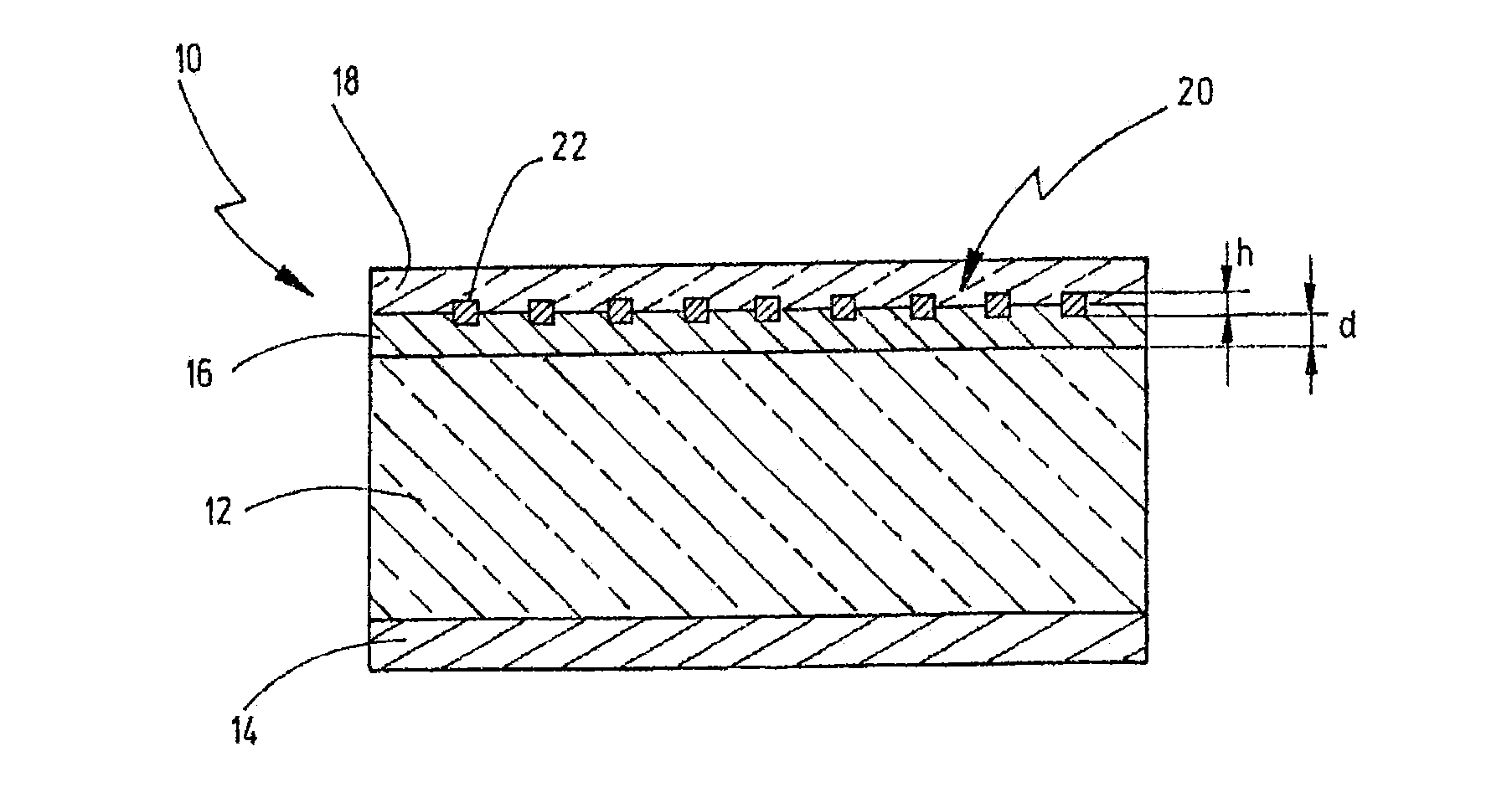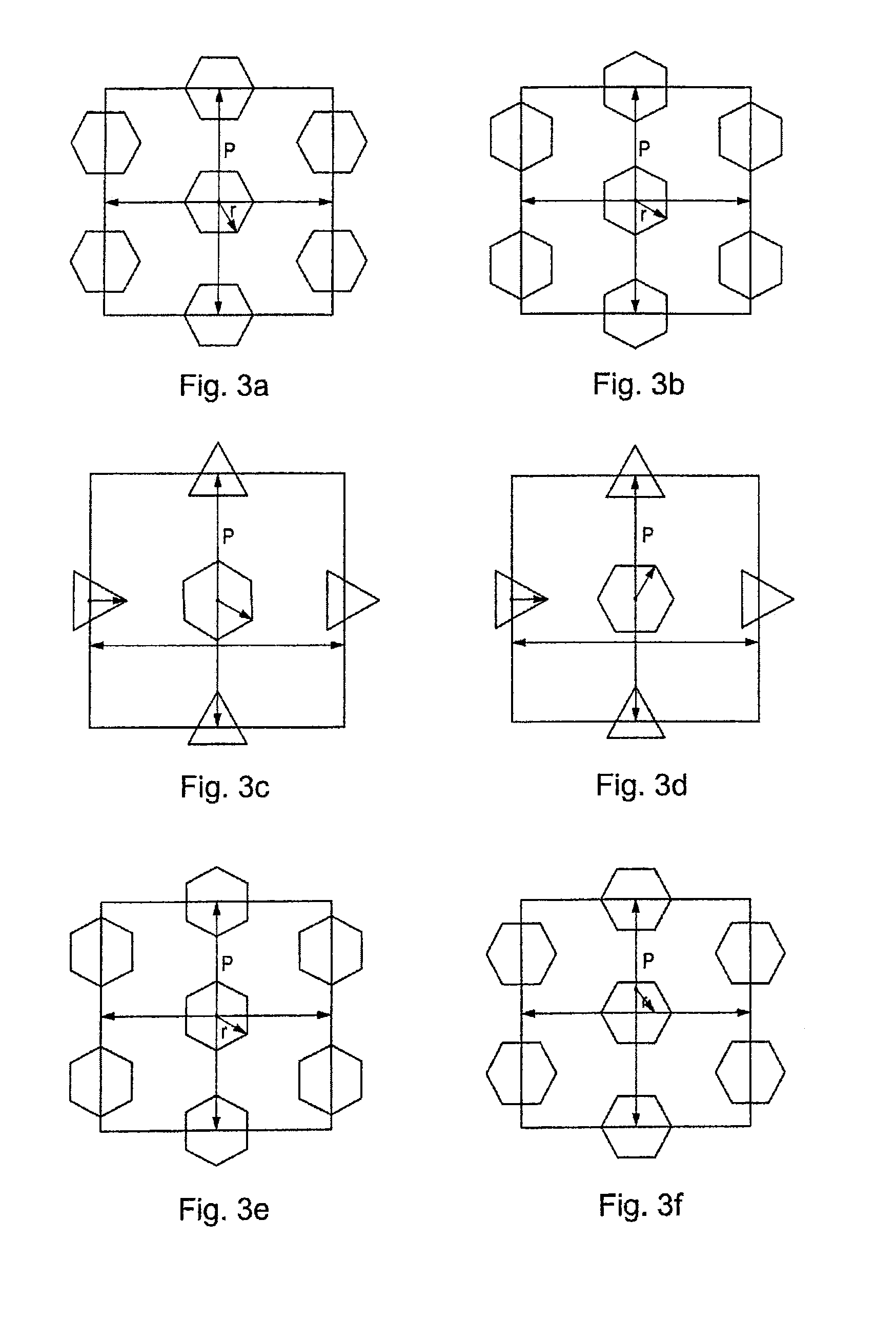Photovoltaic cell, in particular solar cell, and method of producing a photovoltaic cell
a photovoltaic cell and solar cell technology, applied in the field of solar cells and photovoltaic cells, can solve the problems of irregular structure, insufficient development, and optimal structure working, and achieve the effect of improving the efficiency of the system
- Summary
- Abstract
- Description
- Claims
- Application Information
AI Technical Summary
Benefits of technology
Problems solved by technology
Method used
Image
Examples
Embodiment Construction
[0164]In FIG. 1 a photovoltaic cell which here is configured as a solar cell, is depicted in total with numeral 10. This is for instance a standard thick-layer solar cell of (mono-crystalline) silicon comprising an absorption layer 12, a back contact layer 14 of silver, a front side anti-reflection layer 16 of silicon nitride (Si3N4) and thereabove a protective layer of silicon dioxide. In addition a nanostructured layer 20 including antenna elements 22 is partially received within the AR-layer 16 and partially protrudes into the protective layer 18. The nanostructured layer 20 has a height h and a distance d from the absorber layer 12.
[0165]The individual antenna elements may for instance consist of silver, but also of a different material, such as copper, aluminum, gold or alloys thereof, respectively and may possibly on the side of the AR-layer 16 or on the remote side be coated with a different material, may e.g. consist of silver and may be coated on the AR-side with gold. The ...
PUM
 Login to View More
Login to View More Abstract
Description
Claims
Application Information
 Login to View More
Login to View More - R&D
- Intellectual Property
- Life Sciences
- Materials
- Tech Scout
- Unparalleled Data Quality
- Higher Quality Content
- 60% Fewer Hallucinations
Browse by: Latest US Patents, China's latest patents, Technical Efficacy Thesaurus, Application Domain, Technology Topic, Popular Technical Reports.
© 2025 PatSnap. All rights reserved.Legal|Privacy policy|Modern Slavery Act Transparency Statement|Sitemap|About US| Contact US: help@patsnap.com



